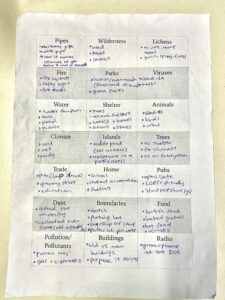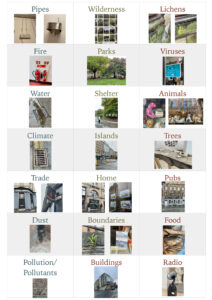We’re currently facing a critical time with a multitude of environmental crises threatening our world. This week’s lecture struck a chord with me, addressing issues like climate change, habitat destruction, pollution, and resource depletion, all of which endanger the well-being of both the current and generations onwards.
It’s evident that human activities, especially in sectors like industrialization, urbanization, and agriculture, have a substantial impact on our environment. It is imperative that we comprehend these interactions and take measures to minimize their detrimental effects. This brings us to the topic of ecosystems, which are currently experiencing a rapid loss of biodiversity. This loss has far-reaching consequences, not only for our ecology but also for our economy.
Ecological literacy fosters an awareness of our deep connection to the natural world, promoting sustainable lifestyles. This educational approach acknowledges that our environment is the foundation of prosperity and calls for a cultural shift in priorities. The concept of eco-literacy was introduced by David Orr. Ecoliteracy and environmental design promote sustainable practices that protect biodiversity. Additionally, the scarcity of resources, such as the depletion of finite resources like fossil fuels and freshwater, underscores the necessity for more sustainable resource management and design solutions.
There is a bright side, which is the potential technology to provide for sustainable design and resource management. For example, graphic design agencies are increasingly adopting sustainable practices, notably eco-friendly inks and materials. This shift is a response to environmental concerns and includes the use of water-based inks, soy/vegetable inks, UV inks, and even innovative algae inks. These alternatives reduce volatile organic compounds (VOCs), air pollution, and health risks associated with traditional solvent-based inks. Simultaneously, many agencies are choosing recycled and biodegradable materials for their projects. This sustainable approach not only lessens their carbon footprint but also sets an example for the design industry, meeting consumer demands for eco-conscious solutions and demonstrating a commitment to environmental responsibility.

Worksheet for A Patterned Ground Treasure Hunt. Photo by Christina Yang.

Categorizing for A Patterned Ground Treasure Hunt. Photo by Christina Yang.
The workshop this week focused on the nature-culture relationship, exploring the entanglements between the two. Dr. Rachel Harkness stated that this exercise is inspired by the “Patterned Ground” book; a collection of short essays underscoring the significance of acknowledging the world as an interplay between nature and culture, as well as the interactions between human and nonhuman elements. The workshop was an enriching one, and the class discussion helped me better grasp the concepts – the key idea is that humans are not separate from nature, but deeply interconnected with it.
Reference list
Harrison, S., Pile, S. and Thrift, N. (2004) Patterned ground: Entanglements of nature and culture. London: Reaktion.
Harkness, H. (2023) Theme 1_Lecture 1B [PDF], Experience and the Environment: Design and the Senses, Making and Consumption. University of Edinburgh.





Another well-put-together blog. Great to see you engaging with the material through the workshop, as well as highlighting further critical concepts in environmental/design thinking.